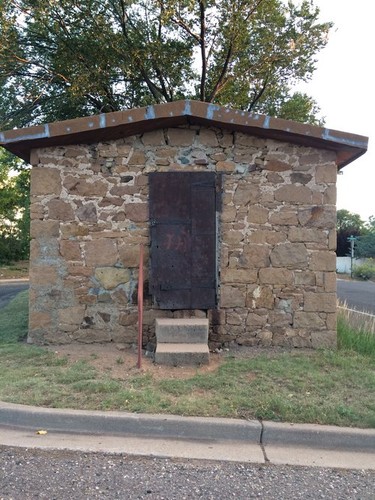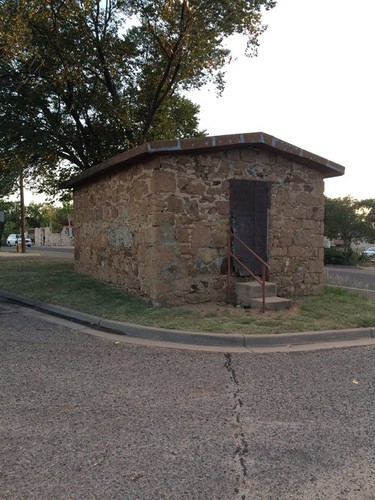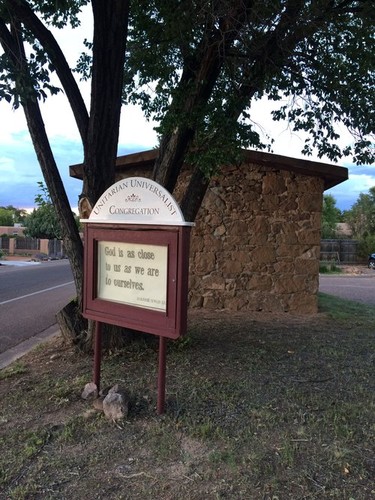The Powder House
Introduction
Text-to-speech Audio
Images
Front of the Powder House

Another view of the house

Back of Powder House with sign for the Unitarian Universalist church

Backstory and Context
Text-to-speech Audio
"At the beginning of the 1880s many Santa Feans believed that their part of New Mexico was on the verge of a mining boom " Reports of rich gold and silver strikes in the Cerrillos district led to a feeling that mineral development at Carbonateville, Bonanza City, and other camps now long forgotten would ma ke the southern part of the county one of the territory's great mining centers.
Plaza merchants were well aware that exploitation of the resources at Cerrillos and elsewhere would bring a strong demand for mining equipment and supplies, including blasting powder. But because of its unstable composition, stocking that item presented a difficult storage problem. To prevent explosive disasters in Santa Fe, representatives of the aptly named Hazard Powder Company, a Connecticut corporation, sought a suitable location for an explosives repository well away from the center of town. On July 3, 1880, the company purchased from leading businessman James L. Johnson a one-acre lot east of the Galisteo road and a mile south of the Plaza. Although the old road has turned into busy Galisteo Street and the location is now part of a residential neighborhood, in 1880 the only structure nearby was Johnson's slaughterhouse, which stood a few hundred to the west. Using rough-dressed, native sandstone, local masons constructed a small pitch-roofed building suitable for storing powder. A heavy wooden door reinforced with sheet iron formed the entrance, the only opening in the eighteen-inch thick walls.
One of Santa Fe's best-known mercantile houses, Spiegelberg Brothers, acted as agent for the Hazard Company and assumed responsibility for managing the Powder House. As part of a corporate reorganization, the Hazard Company transferred title to the Powder House to a subsidiary of E.I. DuPont de Nemours Company in 1909. For the next thirty years the chemical and explosives giant retained ownership of the building while local hardware dealers looked after its operation. In 1939 the property was purchased by a Santa Fe mining man, Joseph Byrne, who also owned a trucking company and a petroleum distribution business. Subsequently, the Church of Jesus Christ of Latter-day Saints acquired the property that included the little building and later conveyed it to its present owner, the Unitarian Church of Santa Fe. At various times the Powder House has been threatened with destruction but fortunately it remains today to recall the boundless optimism that characterized the hardy miners of New Mexico's frontier."
